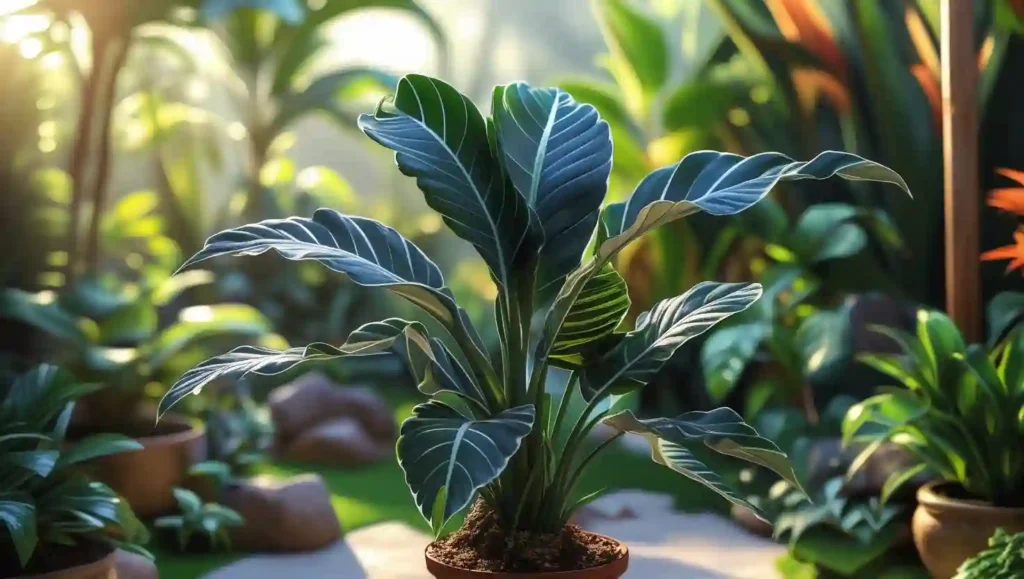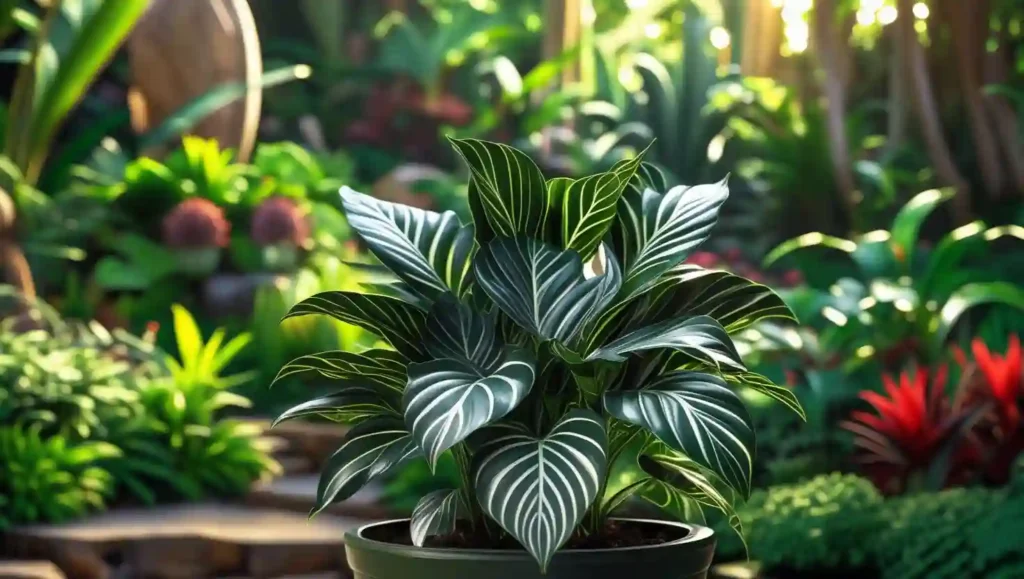Zebra Plant is an eye-catching houseplant that draws attention by its distinctive lush foliage and stunning flowers. No matter if you’re an experienced fan or are just beginning to learn, the stunning beauty will bring elegance to your indoor area. In this article we’ll cover all you must learn regarding this Zebra Plant, including its needs for care, common issues and the benefits.
What Is a Zebra Plant?
The term Zebra Plant commonly refers to two different plant species:
- Aphelandra squarrosa – A tropical plant known for its dark green leaves with bold white veins and bright yellow flowers.
- Haworthiopsis fasciata (formerly Haworthia fasciata) – A succulent variety with thick, spiky leaves featuring white horizontal stripes.
Both kinds are well-loved as indoor plants, however, they require different care. This article concentrates on Aphelandra Squarrosa, which is the tropical Zebra Plant that is loved for its beautiful leaves and striking flowers.
Why Should You Grow a Zebra Plant?

The Zebra Plant is more than just a decorative houseplant. It offers several benefits:
- Aesthetic Appeal – Its contrasting leaf pattern adds a dramatic touch to any indoor space.
- Air Purification – Like many houseplants, it helps improve air quality by filtering toxins.
- Stress Reduction – Caring for plants can boost mental well-being and reduce stress.
- Stunning Flowers – When properly cared for, it produces bright yellow blooms that last for weeks.
How to Care for a Zebra Plant

Growing the Zebra Plant requires attention to specifics because it thrives in certain conditions. Here are the essential care guidelines to ensure your plant is well-nourished and healthy.
1. Light Requirements
It is believed that the Zebra Plant prefers bright, indirect light. Insufficient direct sunlight could burn its delicate leaves and insufficient light could cause slow growth. A good spot is near any windows facing east or north in which it receives sunlight filtered all day long.
2. Temperature and Humidity
Because the Zebra Plant comes from tropical regions, it is able to enjoy mild temperatures of 65-75 degrees (18-24degC). Beware of exposing it to cold winds or sudden temperature changes since these could trigger stress.
Humidity is another important factor in this particular plant. Maintain the humidity over 60% to simulate the natural conditions of the plant. If your house is dry air, you should consider:
- Using a humidifier
- Misting the plant regularly
- Placing a tray of water with pebbles under the pot
3. Watering Schedule
The need to water is one of the most crucial elements of Zebra Plant maintenance. The plant likes a consistently humid soil, but excessive watering can cause root mold. Be sure to follow these suggestions:
- Water once a week, adjusting frequency based on temperature and humidity.
- Use lukewarm, filtered water to avoid chlorine damage.
- Allow the top inch of soil to dry before watering again.
- Ensure proper drainage by using a pot with drainage holes.
4. Soil Type
The Zebra Plant thrives in well-draining, nutrient-rich soil. The ideal mix includes:
- Peat-based potting mix
- Perlite or sand for aeration
- Organic compost for added nutrients
A good-quality indoor plant potting mix works well if amended with perlite for better drainage.
5. Fertilizing Needs
To promote healthy growth and blooming to encourage healthy growth and flowering, provide Your Zebra Plant with an appropriate fertiliser liquid (10-10-10) each two weeks during the growth period (spring as well as summer). Cut down on feeding during winter and fall when the plant is in dormancy.
6. Pruning and Maintenance
Regular pruning helps maintain the shape and health of your Zebra Plant. Trim away:
- Dead or yellowing leaves to prevent disease
- Spent flowers to encourage new blooms
- Overgrown stems to maintain a compact size
Wipe the leaves with a damp cloth occasionally to remove dust and enhance their shine.
Common Problems and Solutions
Like any houseplant, the Zebra Plant can encounter issues. Here’s how to address them:
1. Yellowing Leaves
- Cause: Overwatering or poor drainage
- Solution: Allow the topsoil to dry and check for root rot.
2. Leaf Drooping
- Cause: Underwatering or sudden temperature changes
- Solution: Water consistently and keep it in a stable environment.
3. Brown Leaf Tips
- Cause: Low humidity or excess fertilizer
- Solution: Increase humidity and reduce feeding frequency.
4. No Flowers
- Cause: Insufficient light or lack of nutrients
- Solution: Move the plant to a brighter spot and fertilize regularly.
Propagating the Zebra Plant
Propagation is a great way to grow new Zebra Plants from an existing one. The best method is stem cuttings. Follow these steps:
- Choose a healthy stem – Cut a 4-6 inch stem below a leaf node.
- Remove lower leaves – Leave only a few leaves at the top.
- Dip in rooting hormone – This speeds up root development.
- Plant in moist soil – Use a mix of perlite and peat moss.
- Maintain high humidity – Cover the pot with a plastic bag to create a greenhouse effect.
- Wait for roots to develop – In about 4-6 weeks, new roots will form, and the plant can be transferred to a regular pot.
Is the Zebra Plant Pet-Friendly?
It is believed that the Zebra Plant is non-toxic to animals and cats so it’s a safe option as a pet’s food. However, consuming it can cause stomach upsets. It is recommended to keep it away from the reach of children.
Decorating with a Zebra Plant
Due to its bold foliage, the Zebra Plant makes an excellent decorative piece. Here are some ideas to incorporate it into your home:
- Living Room Centerpiece – Place it in a stylish ceramic pot on a coffee table.
- Office Desk Companion – Adds a touch of greenery to your workspace.
- Bathroom Plant – Thrives in humid environments with indirect light.
- Shelf Display – Combine with other tropical plants for a lush indoor garden.
Final Thoughts

It is the Zebra Plant It is a stunning and yet a bit demanding houseplant that rewards patience by providing gorgeous foliage and beautiful flowers. With the right care, which includes lighting, regular watering, and a high humidity, you can take pleasure in this beautiful tropical plant within your home for many years to come.
If you’re cultivating the this plant to impress your guests or its air purifying properties it’s an ideal choice for people who love plants. Follow these tips for care then the zebra plant will thrive and make a statement in your garden.
